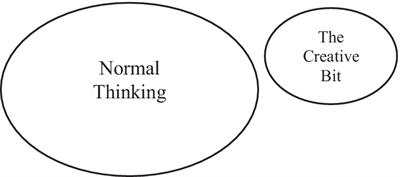Where in the brain is creativity? The fallacy of a creativity faculty in the brain
The neuroscience of creativity is built on a tacit and near universal assumption that is false.Paradoxically, this is not contentious; once made explicit, the assumption is readily conceded as false.

. Psychology regards creativity as made up of many complex, multifaceted, and varied cognitive and emotional processes deployed across many different domains. But we instead think of, and treat, creativity as if it were a single, separate, cohesive, and discrete thing—as in, Einstein had it. In a straightforward extension of this fallacy, cognitive neuroscientists have looked for uniquely creative cognition that (1) is distinct from all other kinds of cognition and (2) has a proprietary neural substrate. In other words, a standalone and monolithic creativity faculty in the brain that manages only creativity and all creativity. First, this paper brings into sharp focus the nature and ubiquity of this fallacy. It then outlines the alternative theoretical position that is (1) based on fundamental neural principles and (2) predicated on taking seriously the concept of creativity as complex and diverse. Like morality or secretiveness, it holds that creativity does not exist as its own, specialized entity in the brain. Instead, its neurocognitive mechanisms are distributed, embedded, and varied; that is, creativity is everywhere and multiply realizable..
Read the full article at the original website
References:
